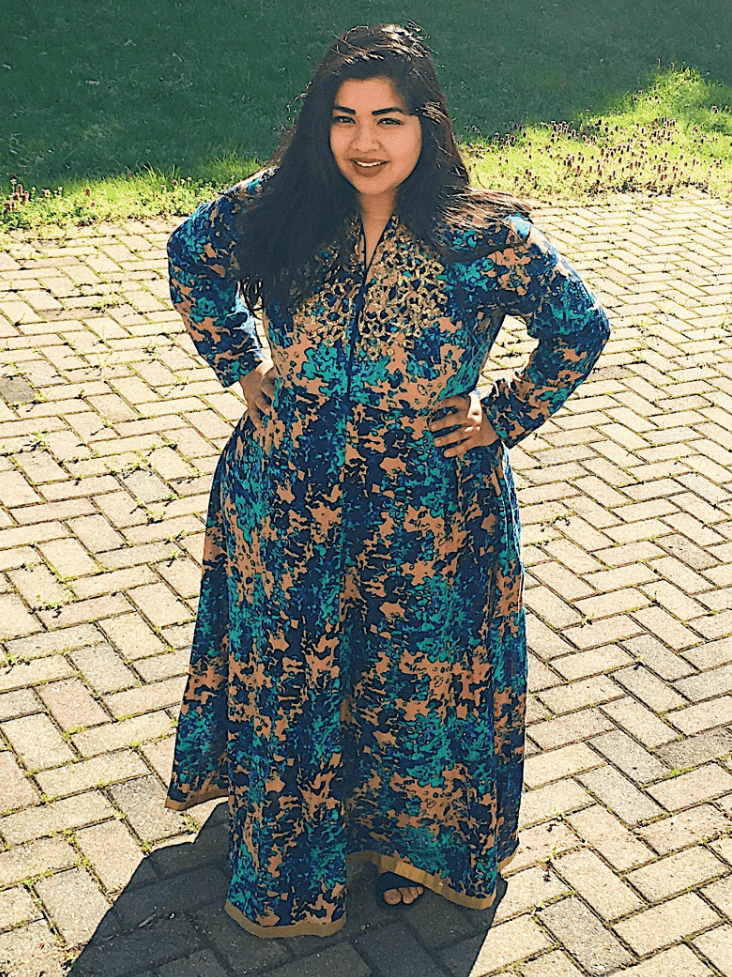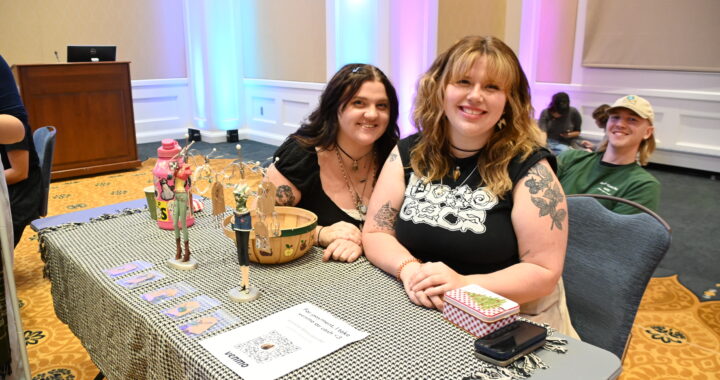UMW Style: Cultural Expression at Multicultural Fair
3 min read
Savara Gunn | The Blue & Gray Press
By SAVARA GUNN
Rahima Morshed- Freshman
“I have brought an awareness of the joy and color celebrated in the Punjab region this Multi-Fair. This form of celebration is also categorized as a dance form called Bhangra. Bhangra, the term, literally means ‘to be intoxicated with joy.’ It represents my Indian heritage and the North Indian fashion at the multicultural event. This culture was also represented in the Hindi steez performance as well as Bhangra. My dress is representing my Indian heritage that I have from my Mom’s side of the family. Her family comes from Kashmir and Rajasthan, India. The long “kameez” or “dress” is commonly found in parts of north India and places like Pakistan. Bengali culture influences my personal style as well. For one, I wear a nose stud which is a very Bengali traditional thing for all women and I love to wear scarves that come from place like India and the Middle East.”
Juliana Saracho- Senior
“I’m the president of ASA (Asian American Student Association), so this year we have Chinese New Year Red Envelope Decorating. The purpose of these is to encourage gift giving and kindness, and I organized that. I’ve also performed for UMW Breakers, UMW Eagle Bhangra, MEDC (Middle Eastern Dance Club), which is Belly Dancing, and ASA KPOP. I wore this top for MEDC, the denim I wore for KPOP, and the pants I wore for Breakers. I usually think ‘Is this something I can dance in?’ If I’m like ‘Oh, I have to belly dance today’ I’ll grab a crop top or something. If it’s break dancing I want my shoes to be comfortable. I plan my outfits around what I do and the cultures that I’m a part of influence me more than others in terms of fashion.”
Sarah Law- Senior
“I should’ve been born about 30 years ago so this is everyday for me. The way that I dress has influenced both my life and given me the opportunity to meet a lot of new friends. Boy George, a little bit of Cyndi Lauper and sometimes Molly Ringwald on a good day kind of inspires my style. The 1980s is just where I belong. My mother is one of the main reasons because she kept all her stuff from when she was a teenager. She passed that down to me, and I think that’s what kind of got me started. I think my personal culture would be that my mom is a Hairband Girl and she made me a Hairband Girl.”
Danielle Azu- Freshman
“I performed in Bhangra and was also with Voices of Praise this year. I’m from Ghana and Dashiki’s kind of became a trend out of Ghana and into the United States and became really big among the African American community. Whenever my parents go [to Ghana] I’m like ‘Bring me some so I can give some to my friends.’ It’s fun to share culture. I usually get a lot of good comments on Dashikis but sometimes when I’m listening to a certain type of music some people are like ‘Yo, that’s wack.’ and it’s the music I grew up with. A lot of people and the school in general are trying to get more culturally inclined, but there’s definitely a long way to go.”


